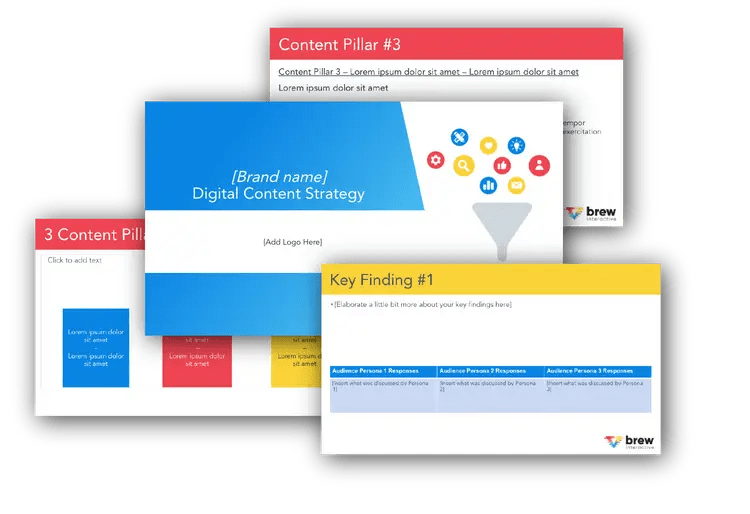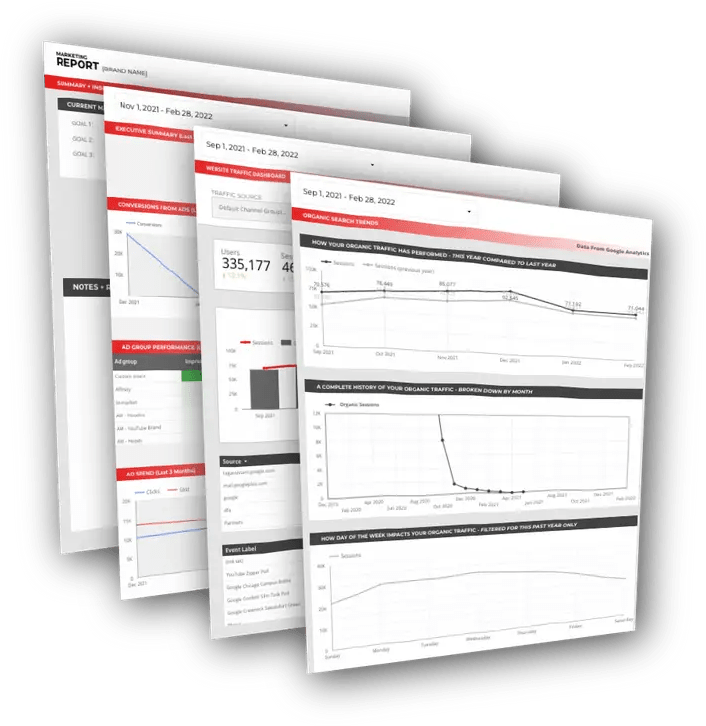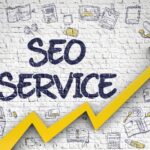Lead generation is vital for any B2B company.
But it’s also one of the biggest challenges B2B marketers face.

In this post, we’ll help you understand why and bridge that gap by covering:
- The 3 biggest challenges for B2B marketers
- 9 top lead generation tips from B2B marketers from around the world
- 1 lead generation strategy that generated a 323% increase in SQLs for a B2B company in Southeast Asia
3 Challenges All B2B Marketers Face
B2B marketing is tough – for a number of reasons. We polled over 30 B2B marketers and put together the three most common challenges B2B marketers face when it comes to lead generation.
1. Complex Buyers’ Journeys
Any marketer knows it’s important to track where their leads come from. But based on a HubSpot study from a few years back, most B2B marketers don’t know the source of the majority of their B2B leads.
You might be thinking, “That’s why you need to use a CRM like Salesforce or HubSpot!” It’s true, site tracking, analytics, and a CRM can help you track the full lead journey.
But even powerful software and brilliant attribution models can still leave gaps in our data. For example, a 2018 study from Digiday found that 41% of marketers use last-touch attribution, but 44% of the same marketers agreed first-touch attribution is more useful.
As B2B marketers, we need to realize that our buyer journeys are complex.
Here’s a recent visual from Gartner of what many B2B journeys look like:
Simple, right?
We need to understand that there are likely multiple touchpoints in our customer’s journeys, and our marketing needs to reflect that. And its important to keep in mind, lead generation for education and other B2C focused industries is more straightforward.
2. Some Popular Marketing Trends Aren’t Applicable for B2B
If you’re in marketing, you’re probably familiar with many of the top marketing trends each year. But many of them don’t always work in the B2B space.
“Many modern trends like UGC, VR/AR, social commerce, gamification, contests and challenges, virtual try-ons, livestream shopping, audience-based TV advertising, etc. are hardly applicable to B2B marketing,” says Oleksii Danchenko, CEO and co-founder of eSputnik.
As another example, in the B2B space, sometimes lead gen methods are going to take you further than demand generation strategies.
Sure, depending on your industry, some of these tactics can work well, but B2B marketers need to understand that all trends need to be tested. What works for B2C brands won’t always work for us.

Free B2B Content Strategy Template
Not sure where to start when it comes to your content strategy? Struggling to gain traction? Grab our free B2B content strategy template to help you document your strategy.
3. Lots of No’s
Sales and marketing in any industry will lead to a lot of no’s. B2B marketing demands perseverance and grit.
COO of Boundless Media Larissa LaMaster agrees, “People will say no, it’s always going to happen. You have to dig through 100 ‘nos’ to get to a ‘yes.’ It’s okay, keep digging. Don’t get discouraged by someone who doesn’t want to work with you.”
CRM Propeller actually found that it’s not quite 100 no’s, but that 80% of sales require five follow-ups.
This principle doesn’t just apply to sales and outbound marketing, but inbound marketing as well. You can’t scrap an inbound marketing strategy just because it didn’t work after the first week.
We need to keep in mind that B2B marketing takes time, experimenting, and regular analysis.
9 Top B2B Lead Generation Tips
1. Use LinkedIn for Prospecting
LinkedIn is a goldmine for B2B sales and marketing.
Social media networks have become primary sources of lead generation for companies all over the world. And while Facebook and Instagram can certainly be used for B2B marketing, LinkedIn provides a much better space for B2B lead generation efforts.
“B2B topics will rarely go viral on Instagram and Twitter, but play a crucial role in the LinkedIn platform and can be a rich source of leads and traffic,” says Kerry Lopez, Marketing Analyst at Incrementors. “As compared to Facebook, Twitter, and Instagram, the professional network is over 277% more effective at generating B2B leads and generates 64% of all social media visits to corporate websites.”
So how can you use LinkedIn to generate leads?
Take Advantage of Your Connections
Kent Lewis, Founder of Anvil Media, sees great success from this tactic, “I reach out to first degree connections once or twice a year to request a 15 minute call to catch up. It’s a manual process that takes time, but it works. I’ve landed half a dozen clients after generating a dozen leads via this strategy the past 2 years.” he says.
How does he do it?
“Specifically, I send a 2-3 sentence (brief is key) note to request a call and include a link to our latest agency news. If the timing is right (it’s all about timing) they respond with interest and we schedule a call. Although my response rate is low (1-2%) the conversion from response to lead is high (30-50%). Once they are qualified and go to the proposal stage, the conversion rate is very high (60-80%).”
Use LinkedIn Sales Navigator
LinkedIn Sales Navigator is a premium LinkedIn tool that costs $79.99/month or $64.99/month for an annual plan. For that price, you get capabilities to save and track up to 1500 leads and send 20 InMail messages each month to those you aren’t connected with.
Director of Milestone Localization Nikita Agarwal uses Sales Navigator’s advanced filters like company size, industry, location, job role and time at company to filter contacts. She then views their profile, sends a connection request, and then connects through a message – often with an invitation to attend an event.
“On average, we’ve seen a response rate of 8%,” says Nikita.
Post and Engage with Content in Relevant Groups
This is one of the best ways to warm up potential prospects – especially if you prefer to stay away from cold outreach.
Find groups that your target audience is engaged with and do the following on a weekly basis:
- Like or comment on a handful of posts you found helpful
- Make a post of your own – it can be a link to a blog from your company or a few paragraphs of insightful and relevant commentary on your industry
- Take note of anyone who regularly engages your posts
After a few weeks of regular engagement, you should be able to identify a few people who could be good leads. At this point, try reaching out and connecting.
2. Create Quality, Focused Content
Ellyne Phneah of Bridge Alliance says that great and relevant content is key to B2B lead generation.
In fact, Demand Metric found that 82% of consumers feel more positive about a company after reading custom content and 70% feel closer to a company as a result of content marketing.
The key here is valuable content.
Because the internet has become so chock-full of generic and regurgitated content, there’s a big opportunity for original content that takes a unique approach and actually benefits your reader.
Learn more about how to do B2B content strategy well.
3. Double Down on Your Messaging
It can be easy to dive into lead generation strategies, but first make sure your messaging is dialed in.
“Establish a message that resonates with your target audience. This includes extensive competitive analysis, in-depth audience persona review, content marketing suggestions, and platform-specific campaign ideas,” says Adam Yaeger, Founder and CEO of Llama Lead Gen.
It’s key not to assume your messaging resonates. Don’t begin investing in marketing campaigns until you really know your audience and what them unique.
Consider interviewing current and past customers about their original pain points, challenges, aspirations, and what drew them to work with you.
Learn more about how to create your ideal buyer personas.
4. Cast a Wide Net
While many B2B marketers focus on closing deals at the bottom of the funnel, you must always be putting effort toward filling the top of it. If you fail to give the top of your funnel proper attention, you’ll quickly find yourself with an empty funnel and missed sales goals.
“When generating new, highly qualified leads, an excellent strategy is to cast a wide net at first. You want to put a lot of prospects into the top of your sales/marketing funnel,” says Jess, Sales & Marketing Analyst at Fit Small Business.
“Then have sales development reps (SDRs) qualify them before moving forward,” she adds.
Learn more about B2B lifecycle stages and grab our free template.
5. Use SEO and PPC Together
SEO is a powerful marketing channel that has the potential to fill the top of your funnel by itself.
Google found that 89% of B2B researchers use the internet during the B2B research process.
Pranay Anumula, Growth Marketer at Keka, has seen great results from SEO efforts, “For our B2B product, we focused mostly on SEO, ranked for product keywords, and long-tail keywords of that product.
However, sometimes B2B SEO can be extremely competitive.
Pranay recommends supplementing with PPC for competitive terms, “For few [competitive] keywords, we PPC campaigns & got good results from it. We didn’t waste time & resources trying to outrank those [more competitive] sites.”
Learn more about B2B SEO.
6. Use a Tool as a Lead Gen Magnet
Once you start driving more top of funnel traffic, it’s time to capture your leads. There are plenty of strategies for doing so, but one of the best is through a lead generation magnet – a piece of content, template, or tool that your visitor gains access to by giving you their email.
Krista Neher, CEO of Boot Camp Digital, suggests using a tool, “Create a unique and interactive lead gen tool. As a digital marketing training company, we use a Digital IQ Test.
The test is interactive and at the end participants are given a score, a badge and a prompt to share on social media. This works because it touches on something our target audience is interested in and has a clear link to our product benefit.”
Learn about 13 types of marketing collateral you can use to generate and nurture leads.
7. Use Chatbots to Convert Site Visitors
Chatbots have the power to take strangers visiting your site and turn them into leads.
Jeremy DSouza of Engati says, “Using an intelligent chatbot, you can ask customers about their needs and share relevant information, 24/7. You can set up specific conversation flows based on their use-cases, rather than sharing generic information.”
But they can be elsewhere, too.
“Bonus points for deploying your bot on the touch points your customers are comfortable with. Don’t restrict yourself to your website. The same bot can be deployed on WhatsApp, Facebook Messenger, Instagram DMs, Twitter, or other channels,” Jeremy adds.
Chatbots can also be a great way to avoid large inbound call queues and handle inbound questions effectively.
Learn how our team used a chatbot to 12x a B2B company’s leads or check out the top chatbots in Singapore.
8. Turn Email Subscribers Into Leads
Once you’re generating email subscribers, email marketing is one of the best ways to nurture them further down the funnel. Email marketing may not be the most trendy lead generation strategy, but it still works.
In fact, 60% of consumers say they’ve made a purchase as the result of a marketing email they received.
CEO of Uplead Will Cannon agrees, “Thankfully, when used correctly, email is still very powerful. A successful email marketing strategy will produce a lot of results.”
The first step is to build your list. You can do so with a lead magnet as described above, or you can convince visitors to convert with appealing copy.
Here’s what Will recommends: “Instead of telling site visitors to ‘sign up for your email,’ invite them to ‘join our gang of 400+ cutting-edge developers and designers.’ This is more appealing than the typical platitude.”
Next, nurture your subscribers with personalization and targeted content to turn them into MQLs and SQLs. This is a vital piece of your lead flow.
Rather than sending out generic newsletters, consider segmenting your lists and feeding these prospects the content they want.
Check out these 10 email marketing automation strategies to help you better nurture your subscribers.
9. Take it Back to the Basics
We’ve covered a number of digital strategies for B2B lead generation, but don’t be afraid to take things back to the basics.
“I prefer a more back to the basics approach by disconnecting from technology periodically and focusing on cultivating human, face to face relationships,” says Paige Arnof-Fenn, Founder & CEO of Mavens & Moguls.
“Meeting for coffee or lunch (even virtually) can accomplish so much more than e-mail exchanges, social media posts, etc. and it is a great way to get to know people better, their interests, hobbies, and dreams. I have found that building relationships is what drives my business and technology supports them once they are solidified,” Paige adds.
One B2B Lead Generation Strategy that Lead to 232% Increase in Leads
We recently had the opportunity to help a B2B company in Southeast Asia increase their SQLs by 232%.
Here’s how we did it:
1. Detailing Buyer Personas
You must start here if you want to run a successful lead generation campaign. Failing to get a good understanding of who you’re trying to reach will lead to wasted marketing dollars.
We didn’t just ask the client to provide their own – we interviewed their ideal customers to ensure we were hearing directly from the horse’s mouth. We used these interviews to craft personas that detailed ideal customer’s buying behaviors, research methods, perception of the industry, and much more.
Learn more about our approach to building out buyer personas.
2. Identifying Key Target Accounts
B2B advertising can be expensive. One way to cut costs and maximize your budget is to take an Accounts Based Marketing approach, where instead of blasting out marketing campaigns, you carefully select target accounts to market to.
We worked with our B2B client to identify 200 target companies they wanted to work with.
Read more about Accounts Based Marketing here.
3. Designing a Lead eBook Magnet
In order to capture Marketing Qualified Leads, we designed an eBook that was laser focused on our buyer persona’s wants and needs. It offered valuable detail pertaining to our client’s industry that their customers were looking for.
We housed it on a landing page that detailed the book’s main topics and focused on the benefit the prospect would receive from reading it. We designed and ran LinkedIn ads to the target companies, taking them to the landing page.
Learn about 12 more advanced ways to generate leads on your website.
4. Running Retargeting Ads
The work wasn’t complete once a prospect downloaded the eBook. We also ran retargeting ads on Google Display Network to keep our client’s brand top of mind with those who had engaged.
This meant that when sales reached out, the prospect had already had multiple touch points with our client’s brand, making them much more likely to start a conversation with our client and become an SQL.
Check out our post on other ways to generate leads with digital advertising.
B2B Marketing is a Journey
Just like the path of our customers, B2B marketing is a journey. Every company is unique, and no single B2B lead generation strategy will work for everyone.
Give some of these strategies a try, track your results accurately, and scale the tactics that produce results for your company.
Best of luck from our team at Brew!

Free DataStudio Marketing Report
Improve your marketing reporting with our free DataStudio template that pulls data from Analytics, Google Ads, and Search Console to get a 360 degree view of your digital performance.





